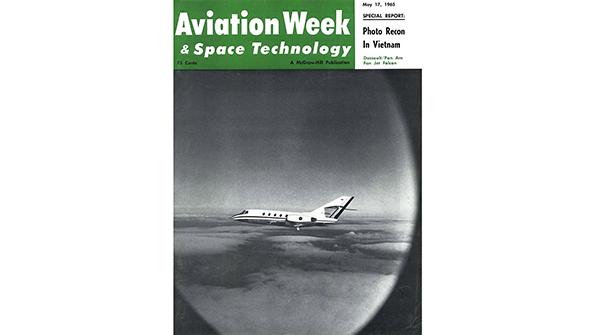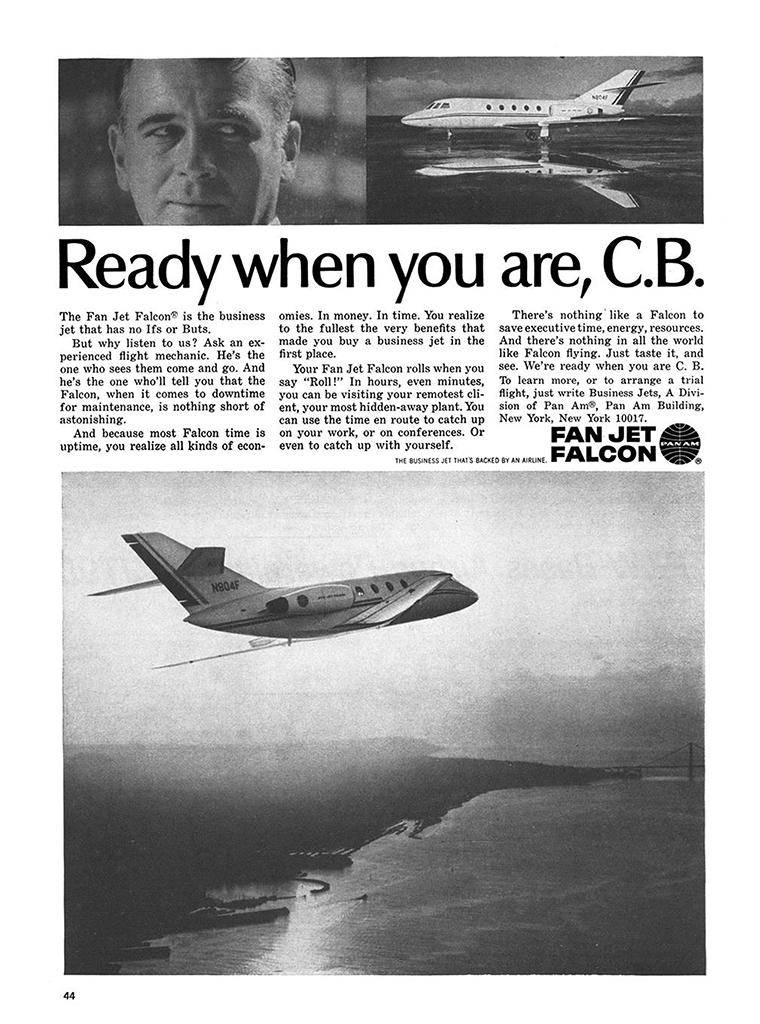
The Aviation Week & Space Technology cover of May 17, 1965, showed the first production Dassault Mystere 20 being flown on a demonstration flight for officials from Pan American World Airways shortly before the cutting-edge executive jet was certified.
Commissioned by Marcel Dassault, the then-head of the French aircraft company that bears his family’s name, the Mystere 20 could carry two pilots and 10 passengers with a maximum cruising speed of Mach 0.80 and a range of more than 2,000 km (1,243 mi.). Its engines were mounted on lateral struts.
A company history says Dassault repurposed technologies it had used on French military aircraft, such as three-axis servo controls, fine-tuned aerodynamics and “conical wing cambers.”

The Mystere 20 proved to be the ideal platform to launch Pan Am’s diversification into executive-aircraft distribution. The U.S. airline sent famed aviator Charles Lindbergh to France in 1963 to witness its first flight. “I’ve found the bird,” he proclaimed, and Pan Am placed orders for 40 aircraft powered by General Electric CF700 turbofans, with options for 120 more.
Renamed the Fan Jet Falcon and later the Falcon 20 for U.S. customers, the aircraft went on to great success as the original workhorse for Federal Express. The U.S. Coast Guard bought a fleet as well. Production finally ended in 1988.
Subscribers can access every issue of Aviation Week back to 1916 at: archive.aviationweek.com






Comments